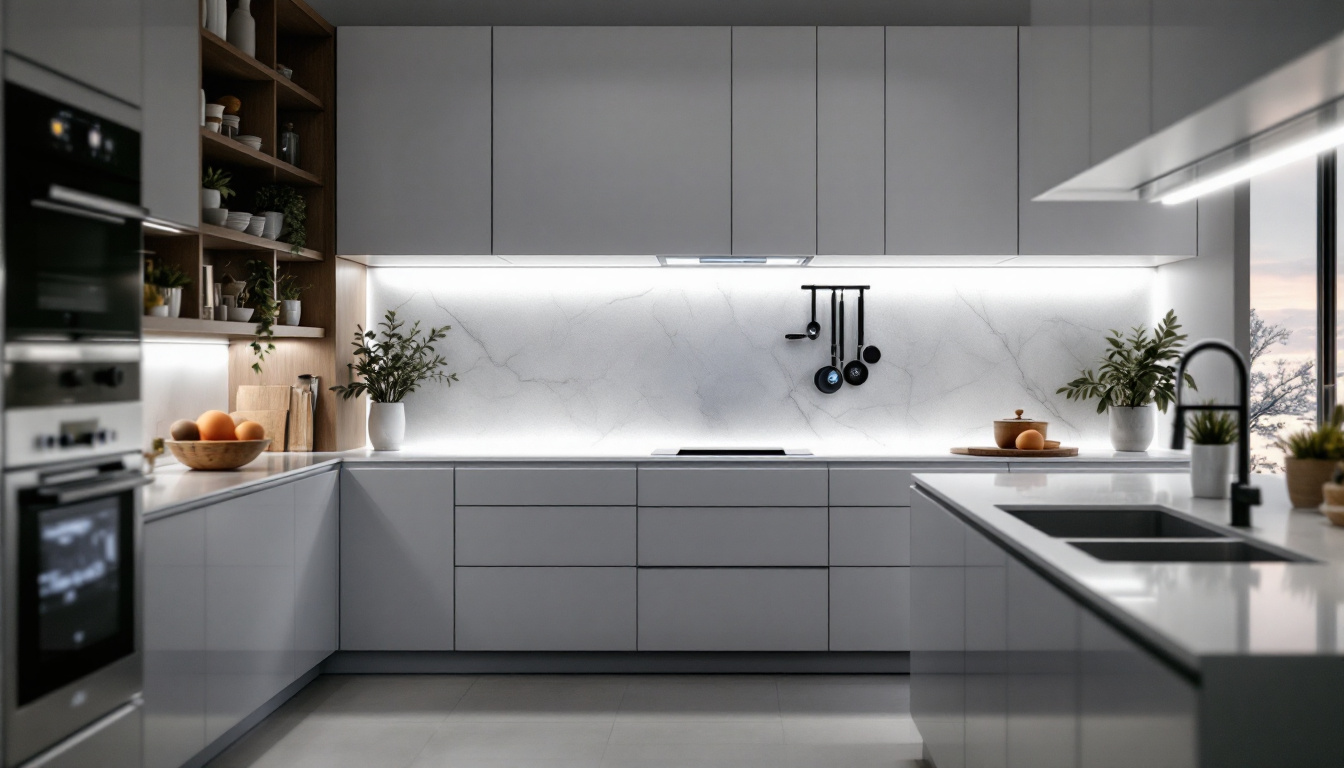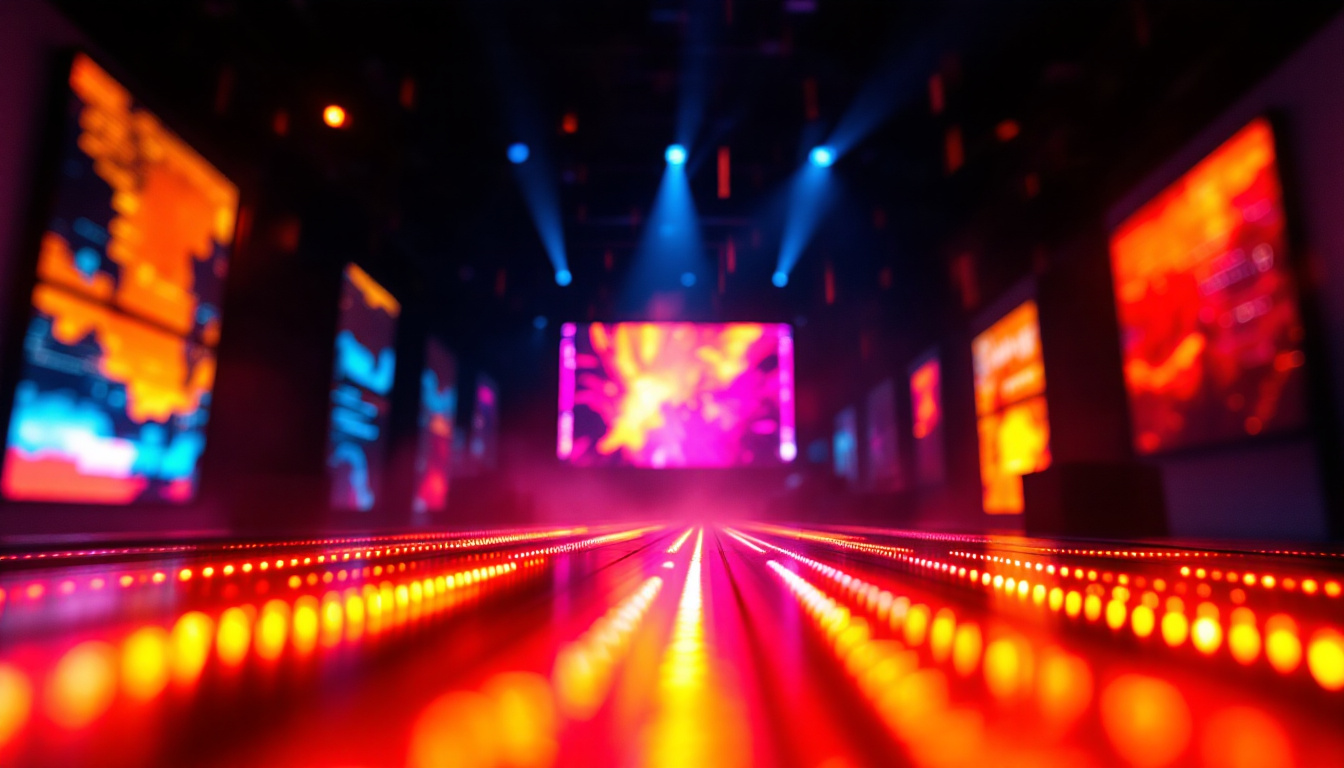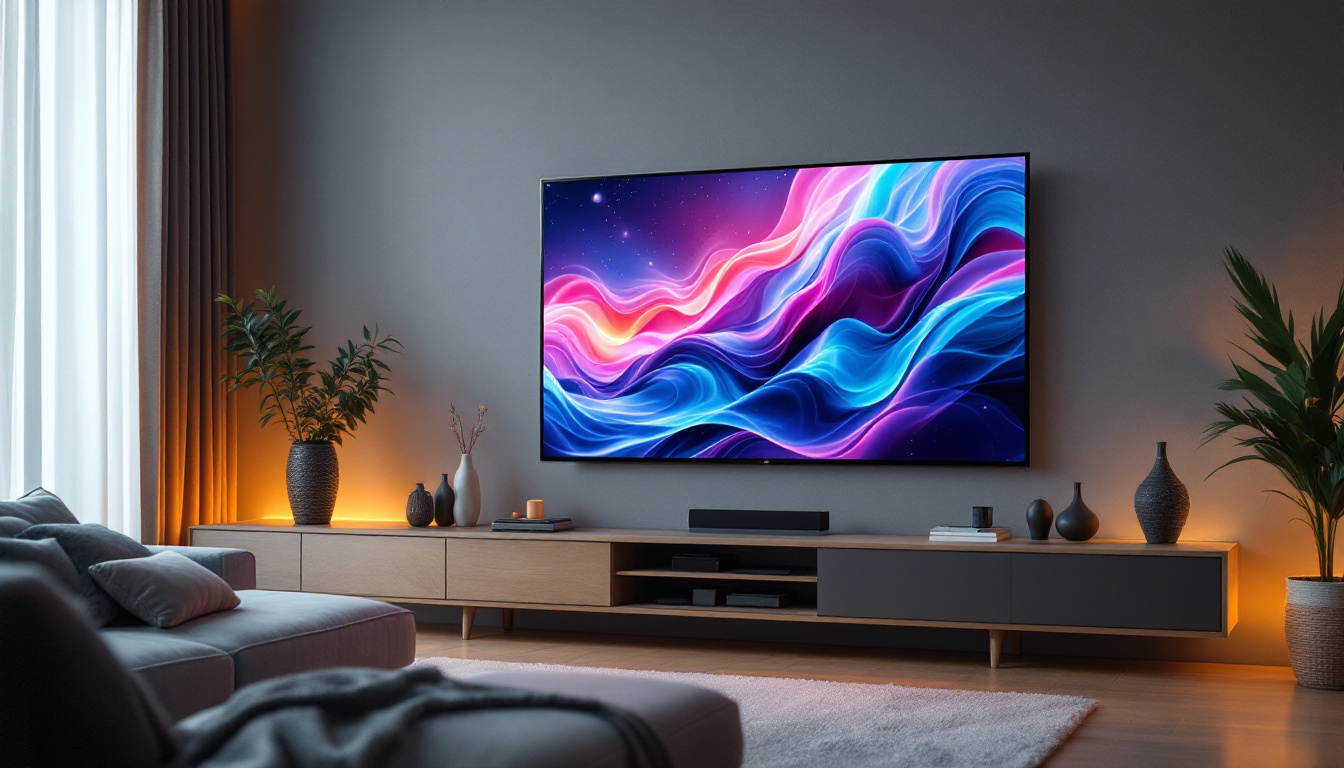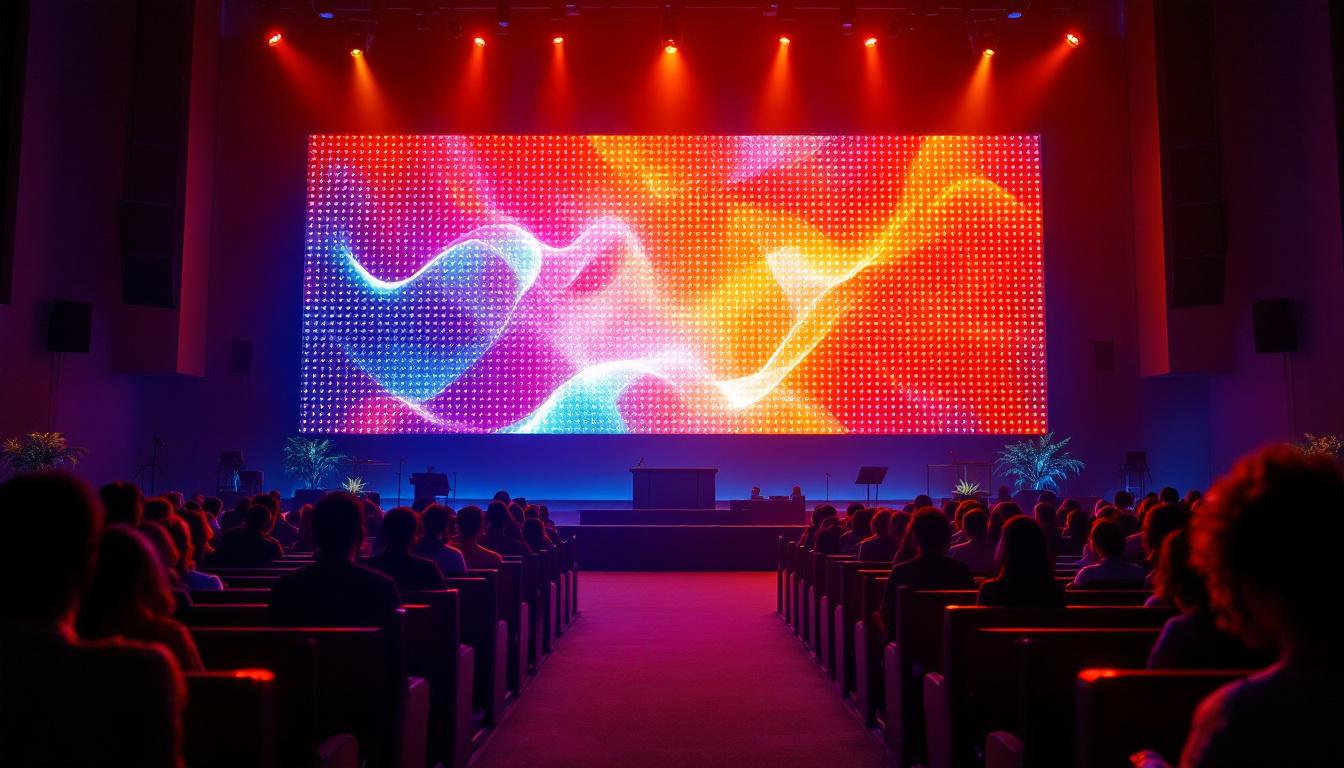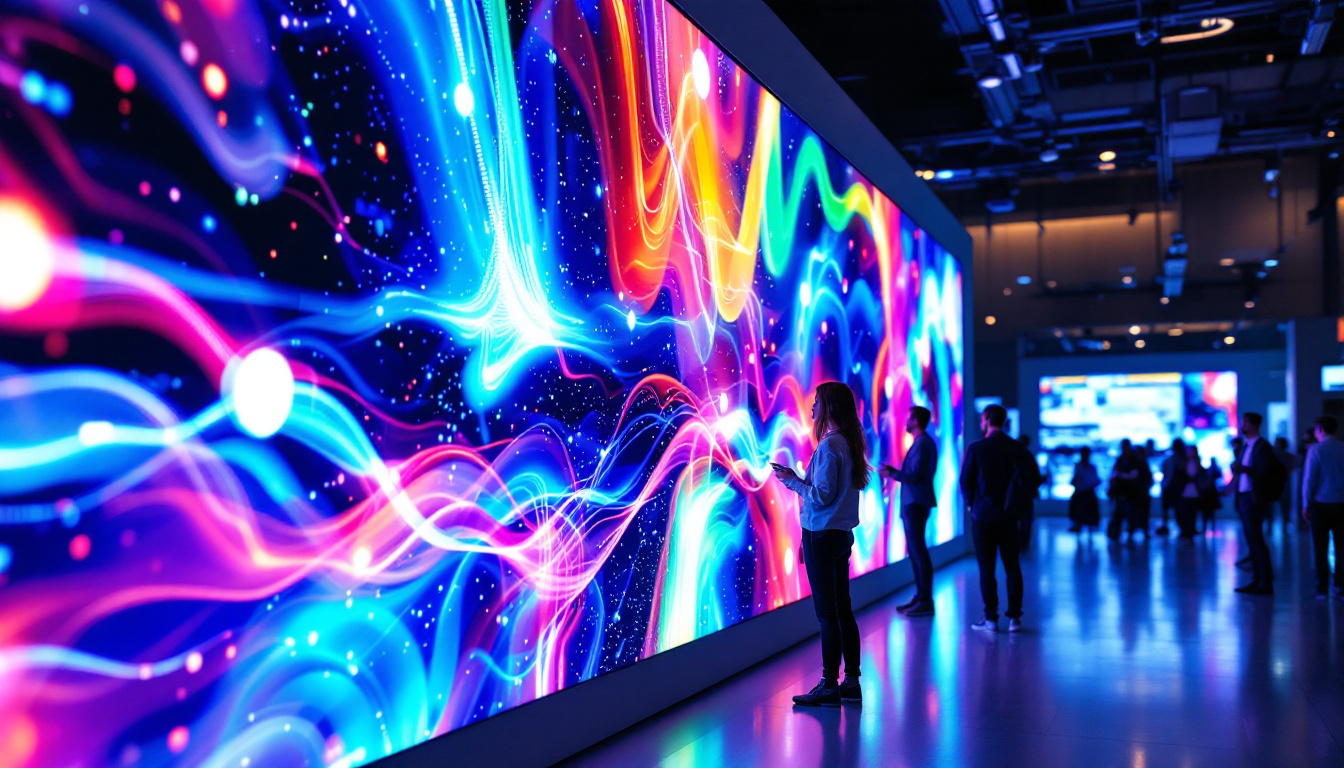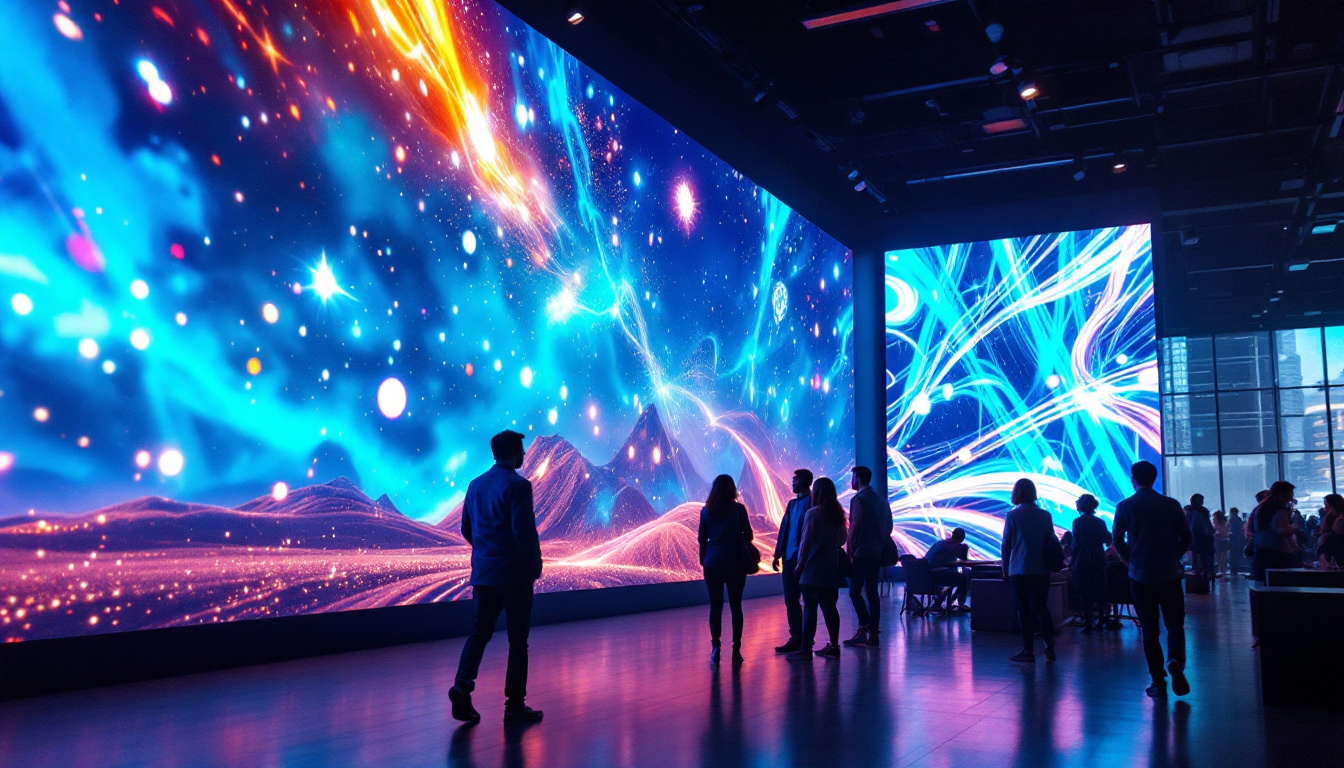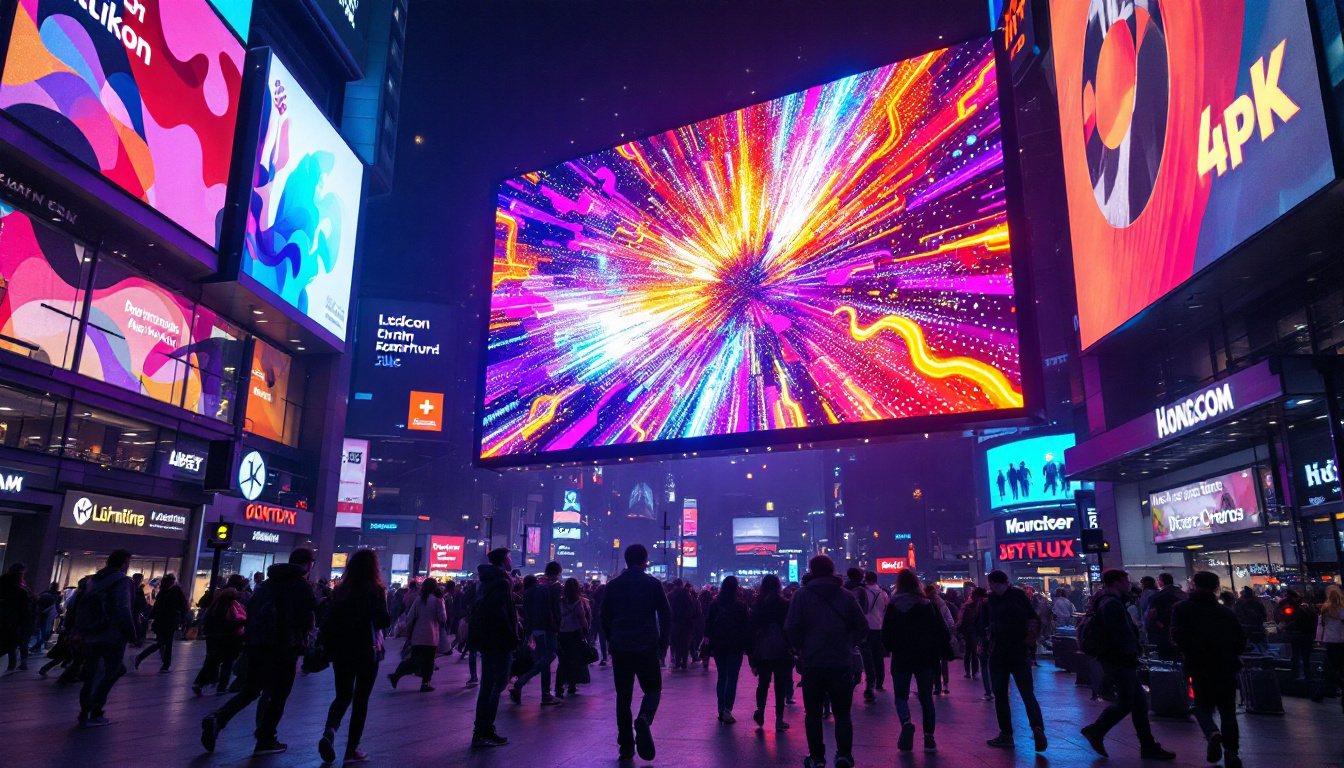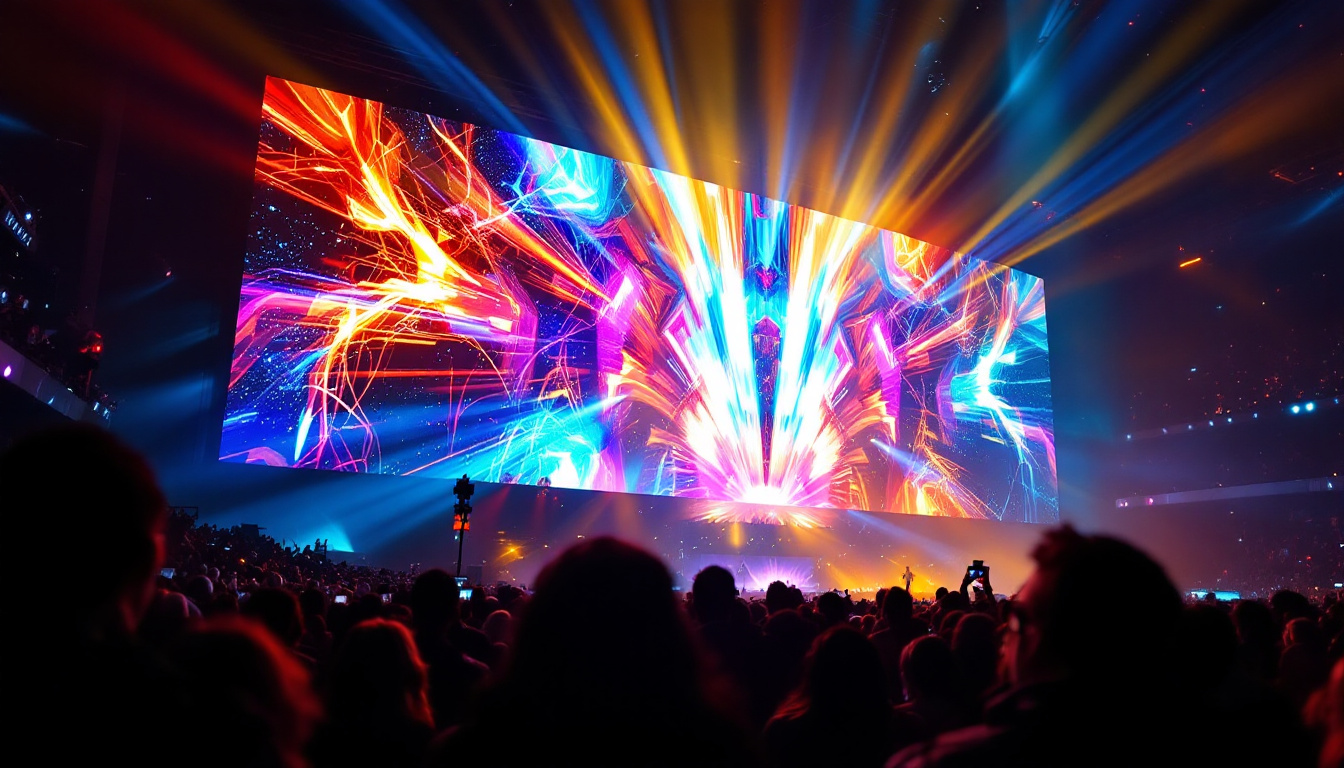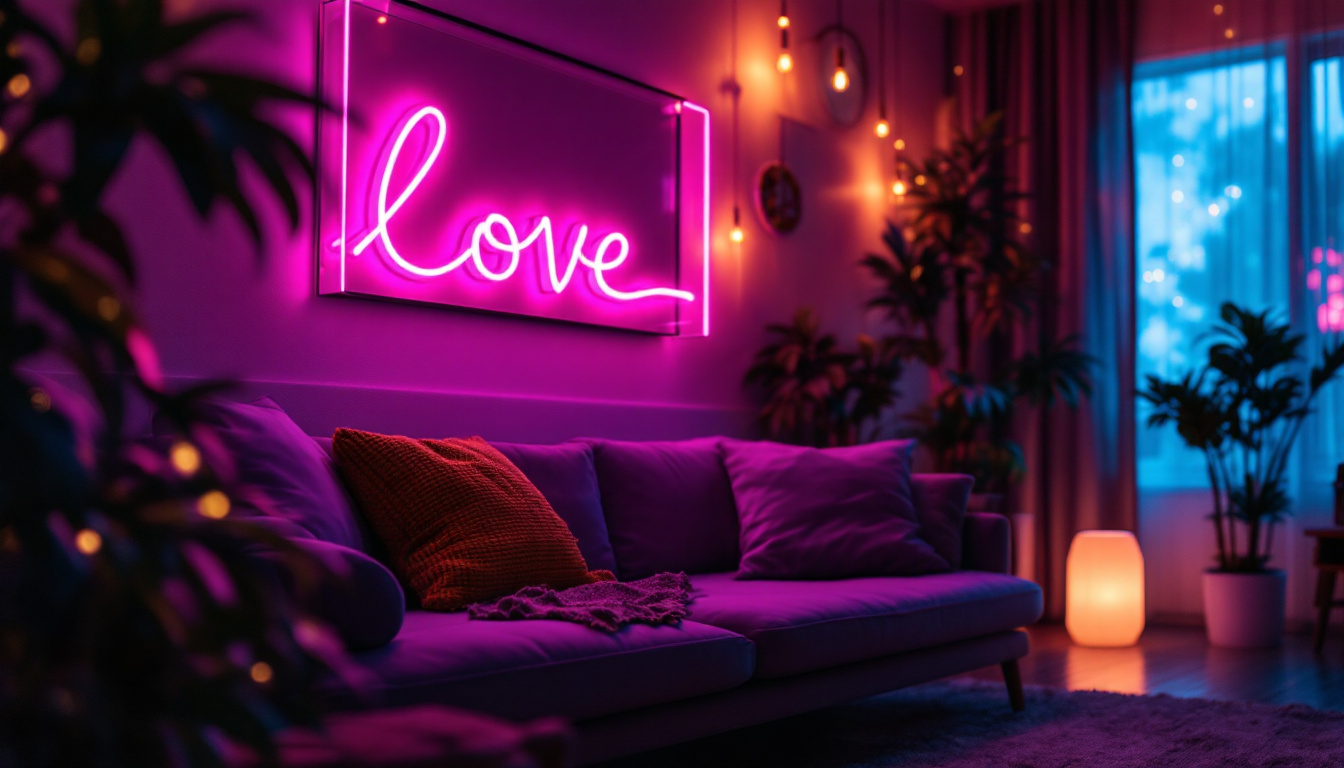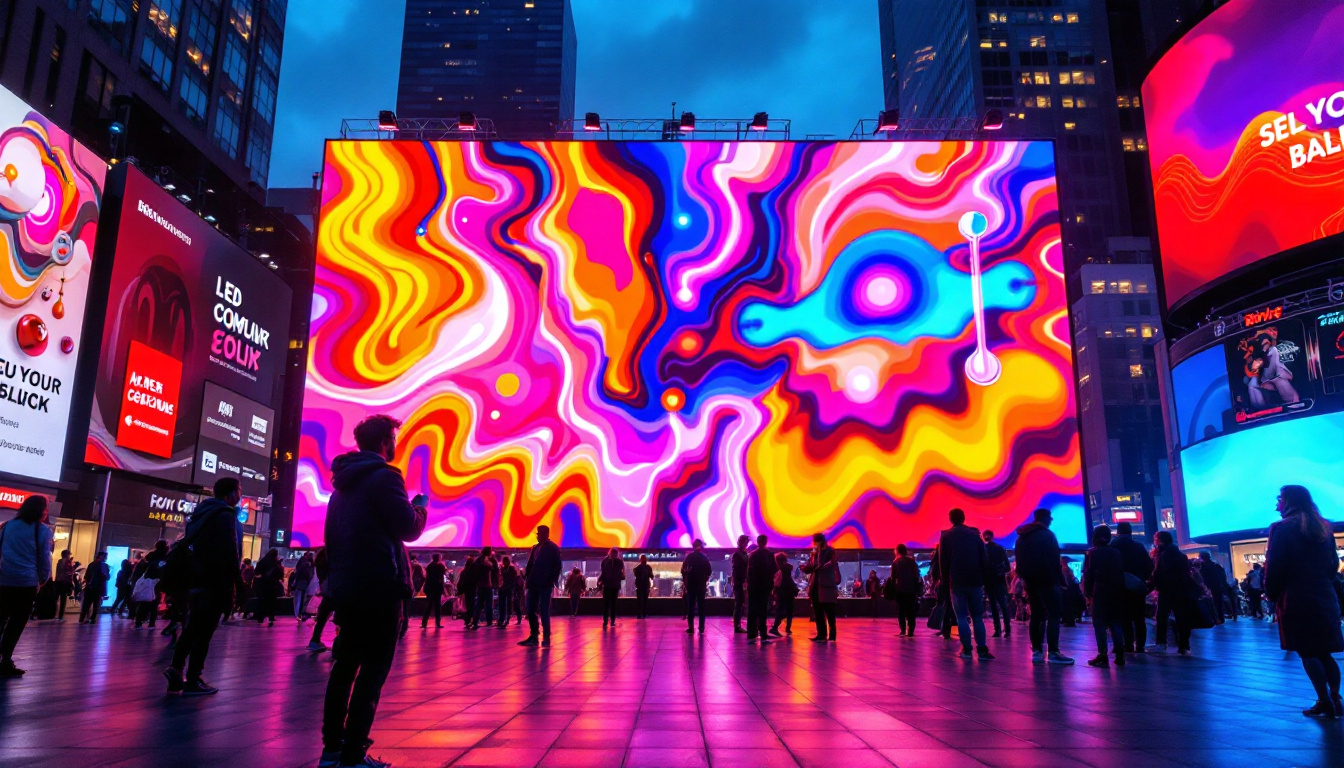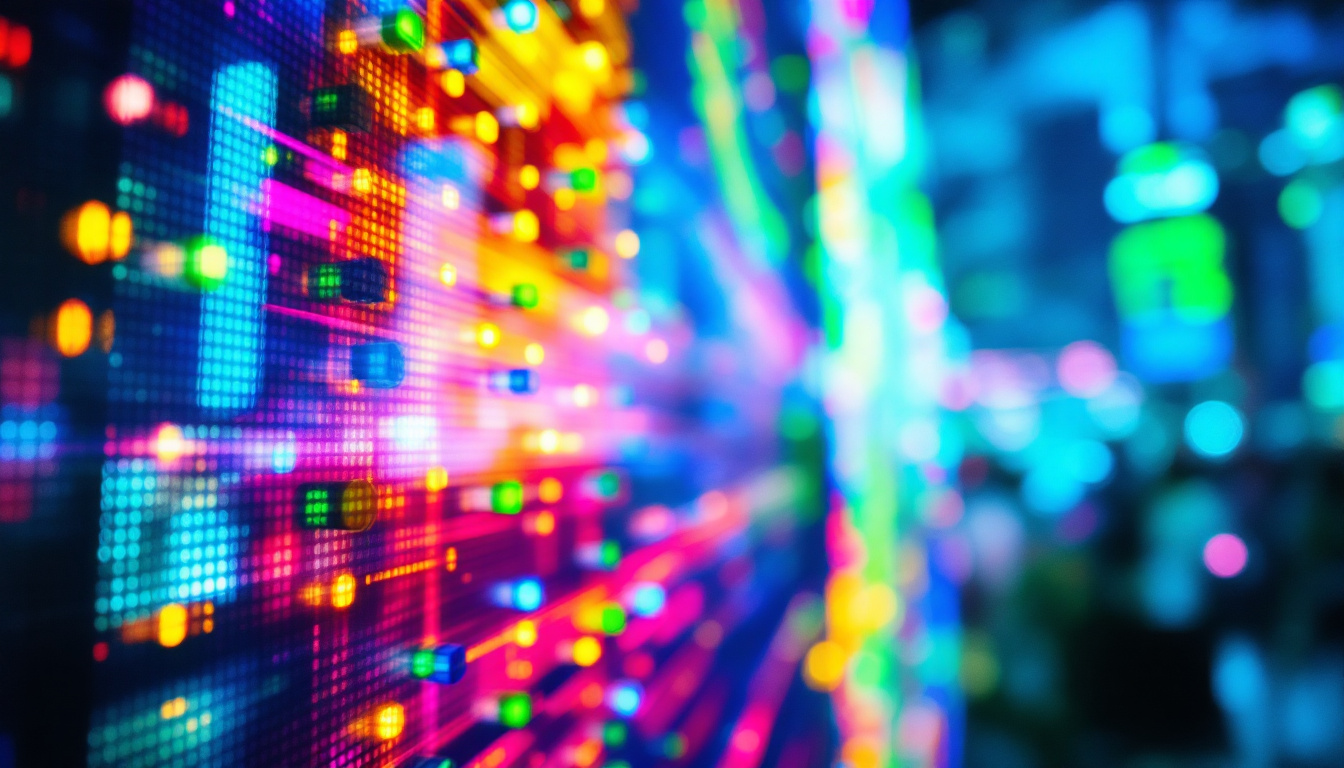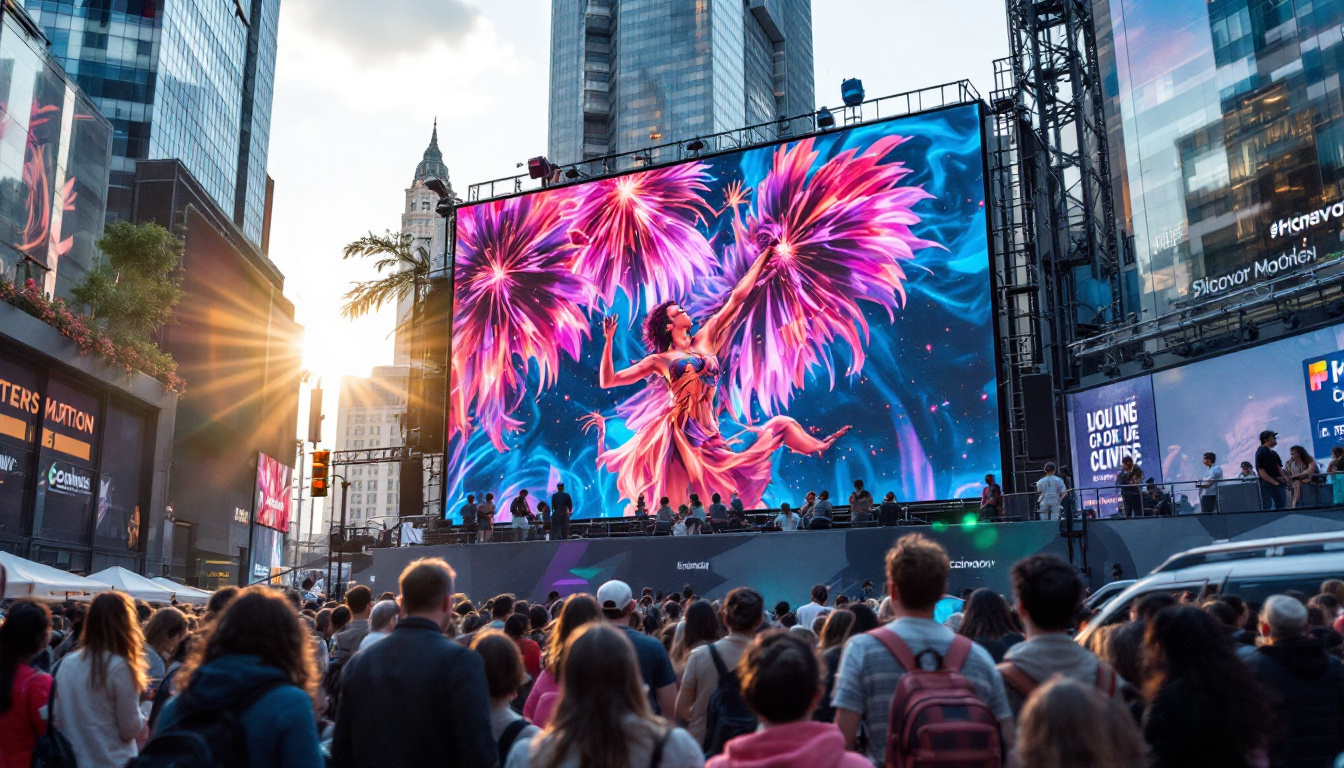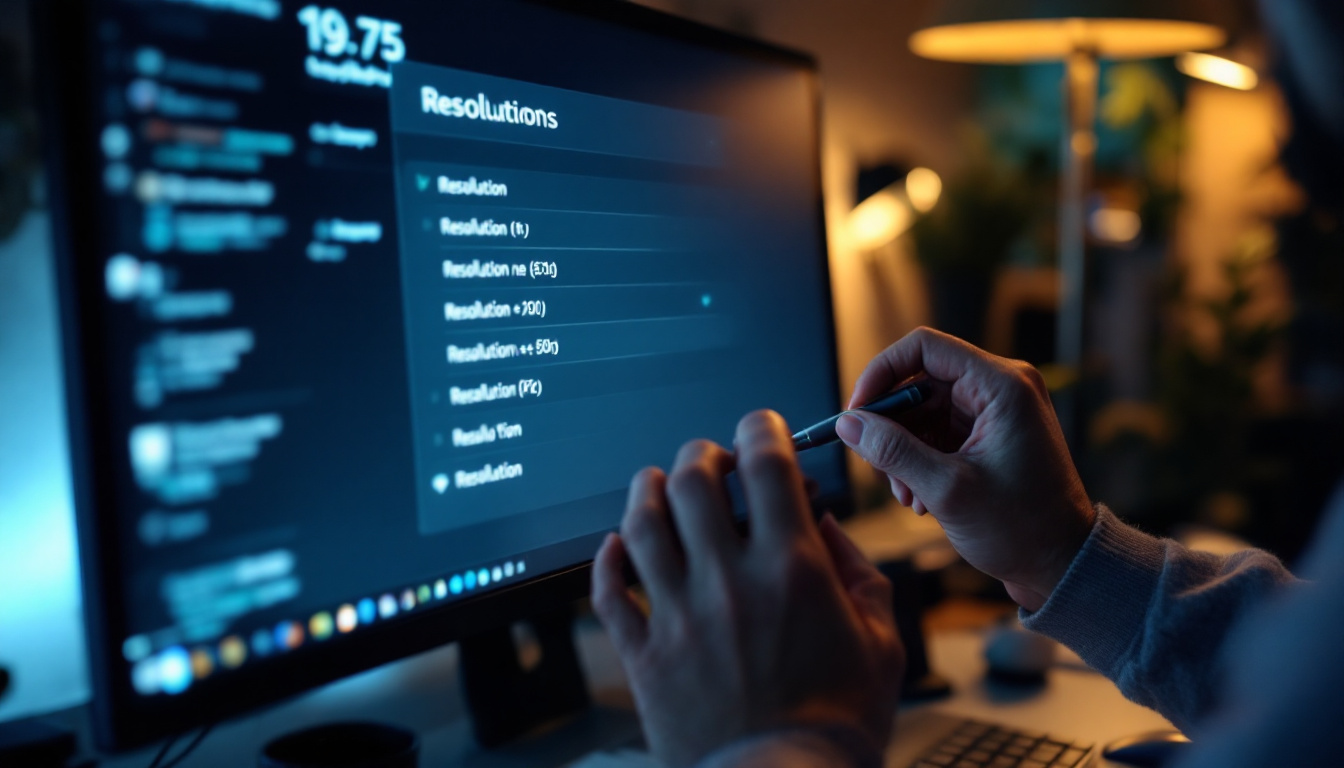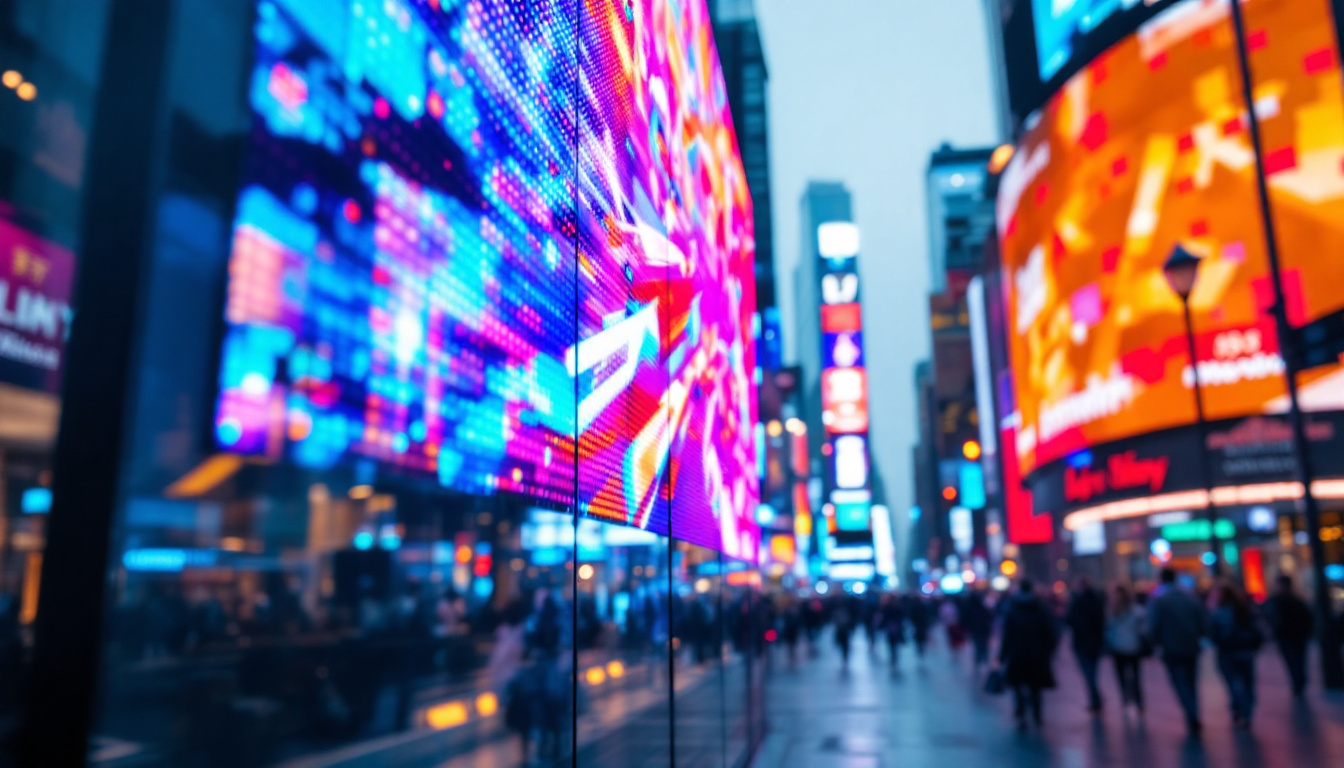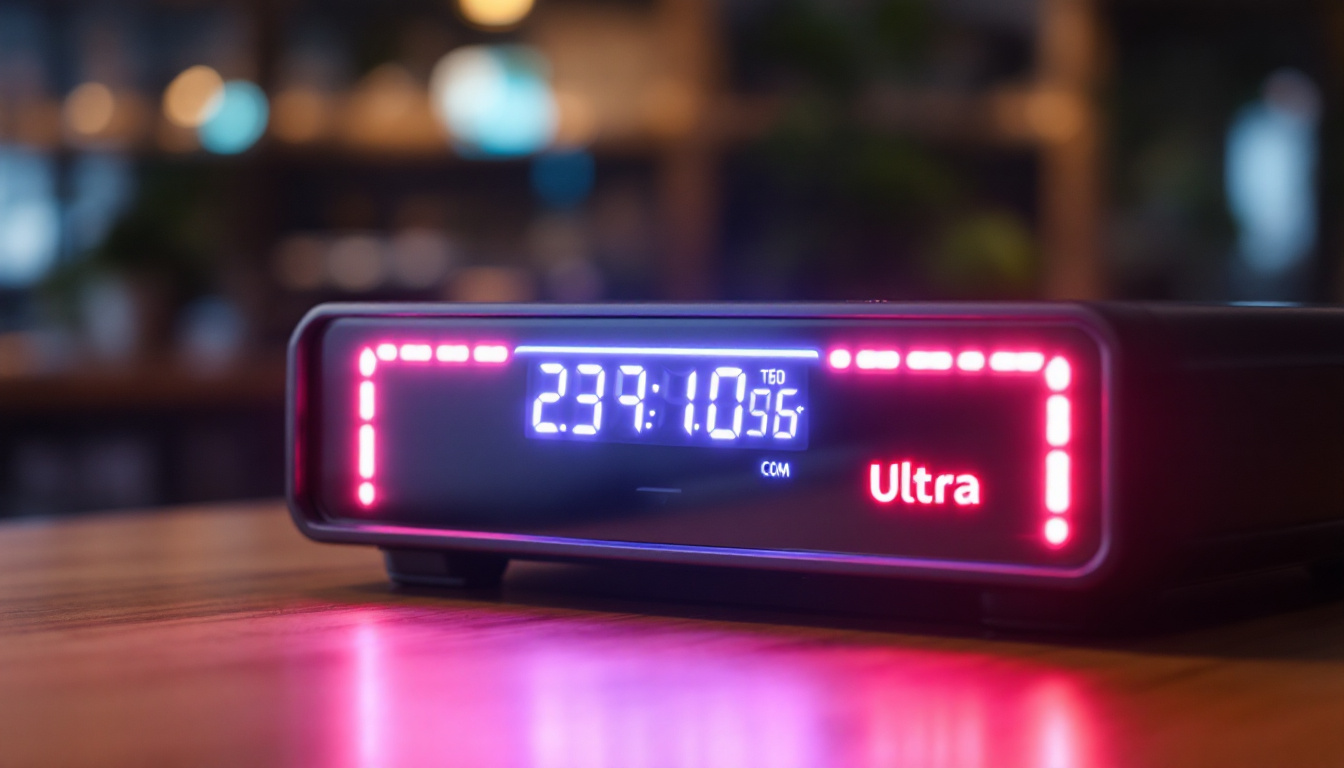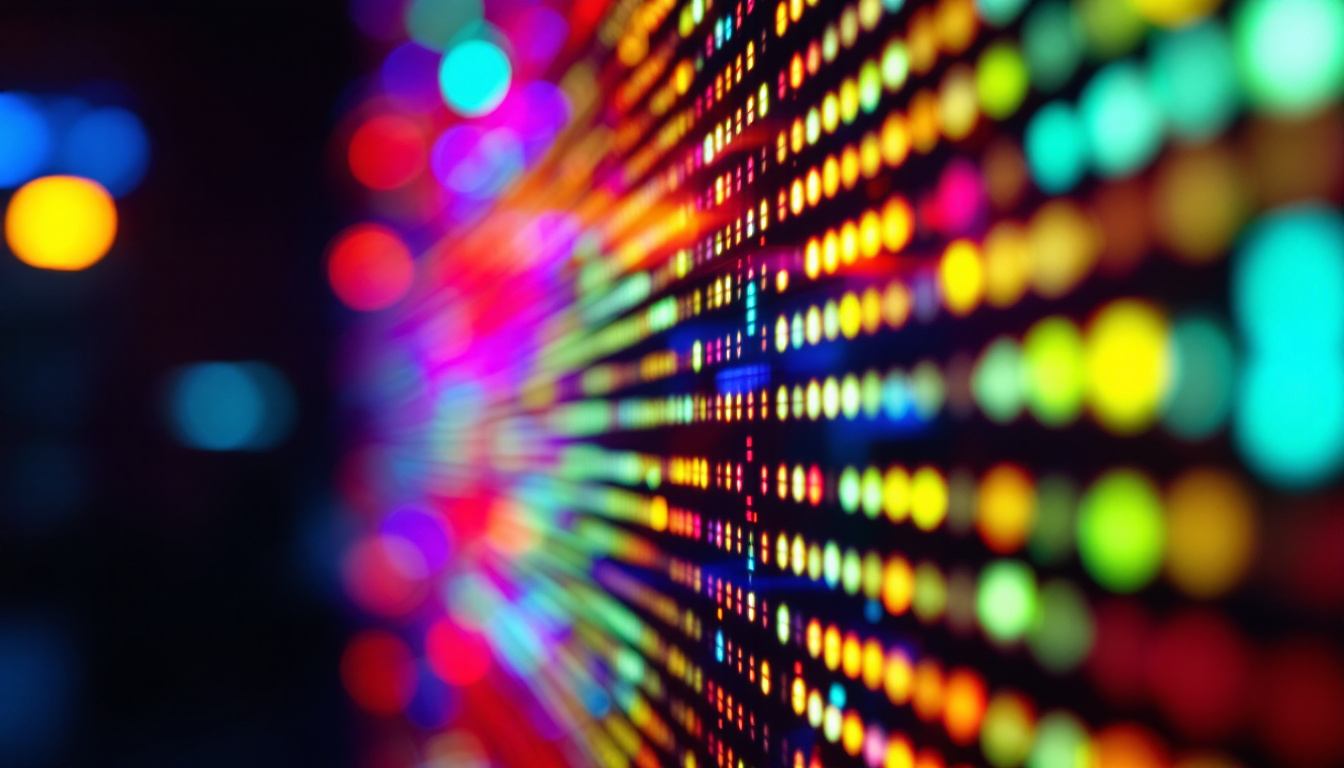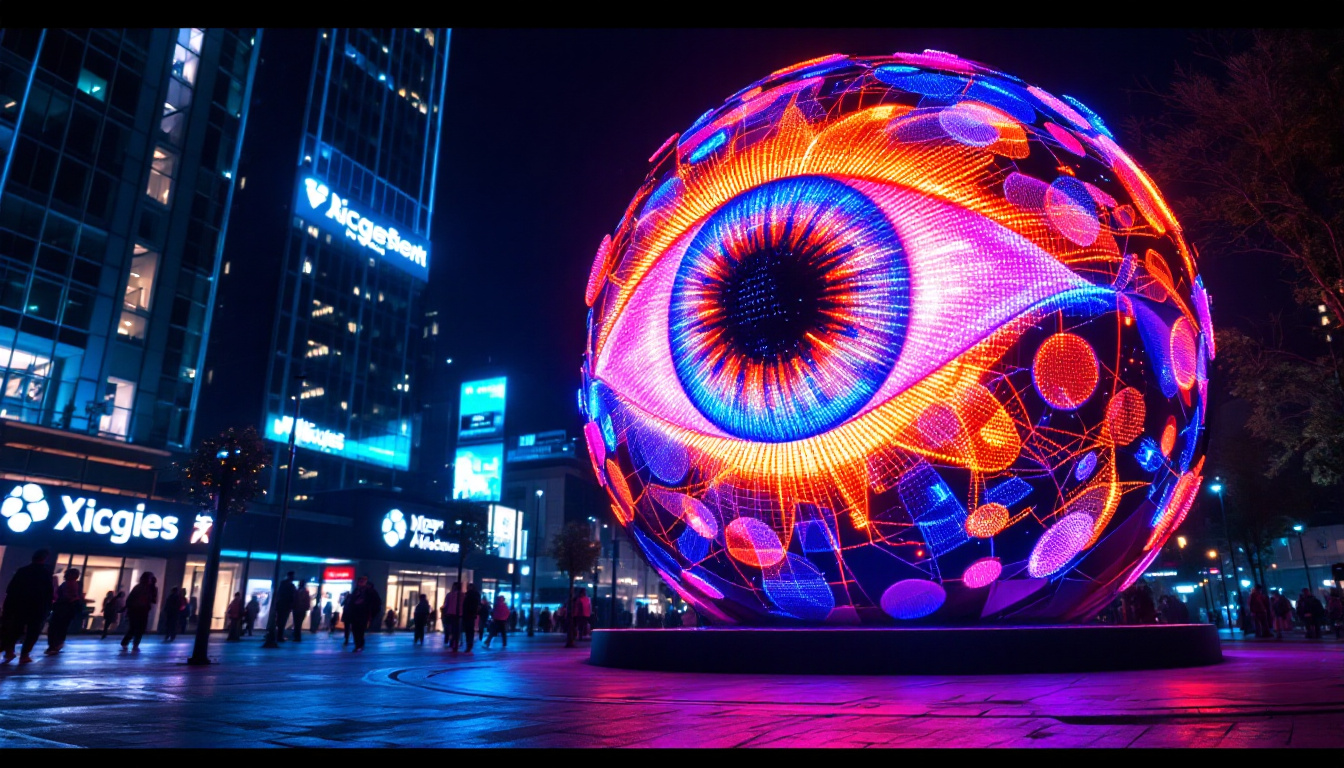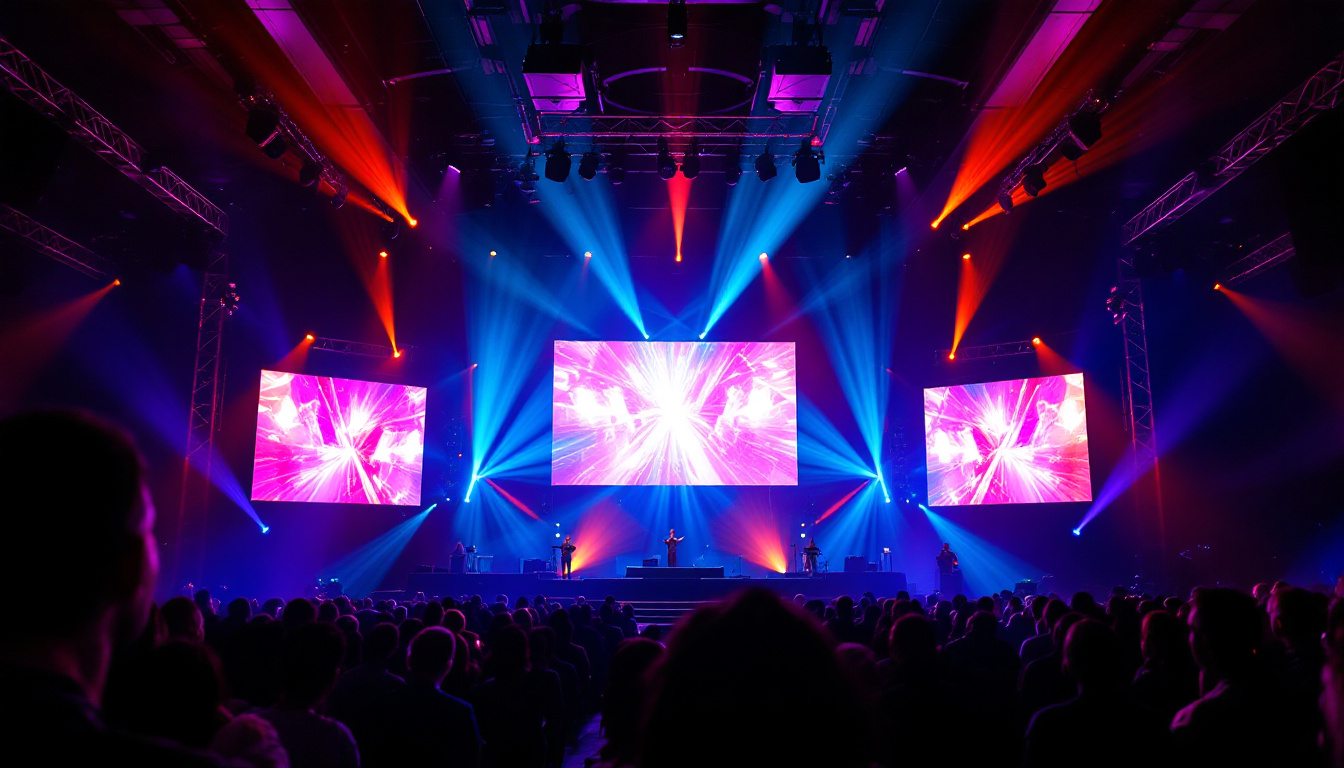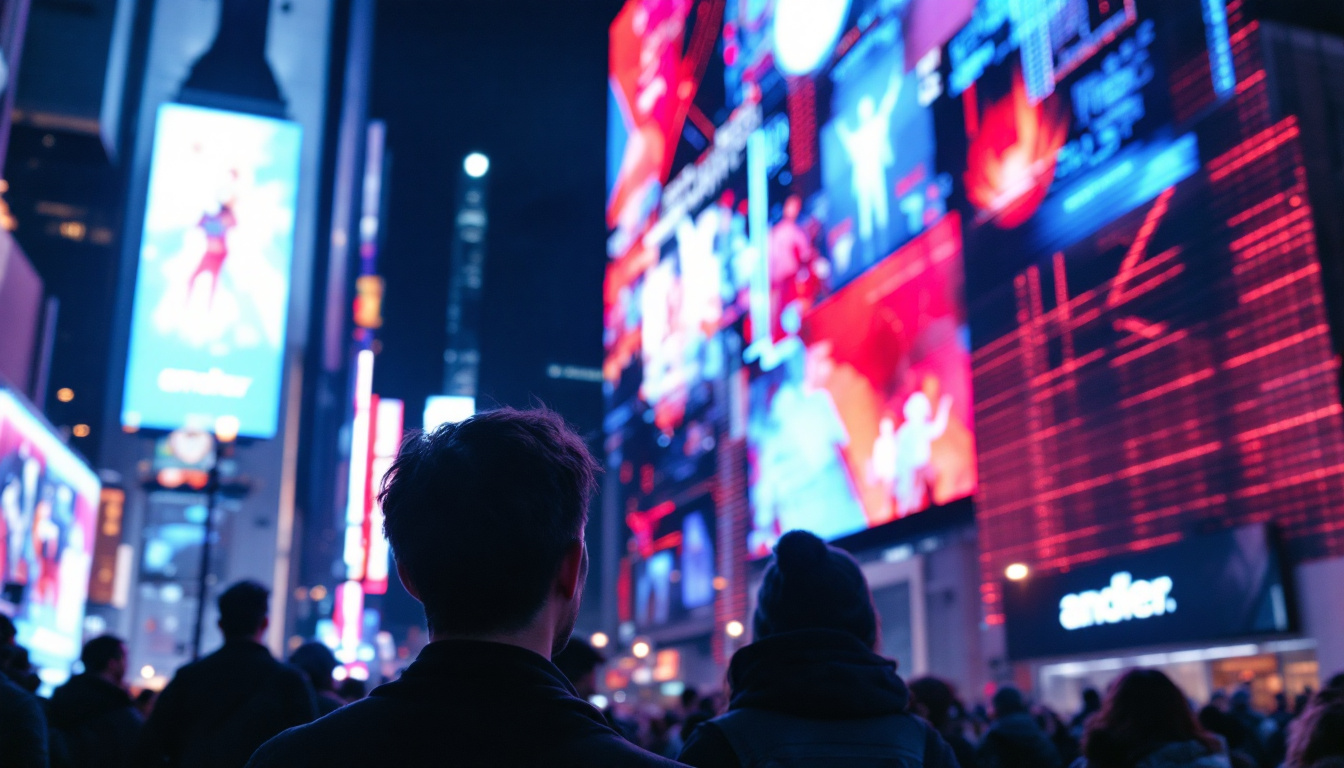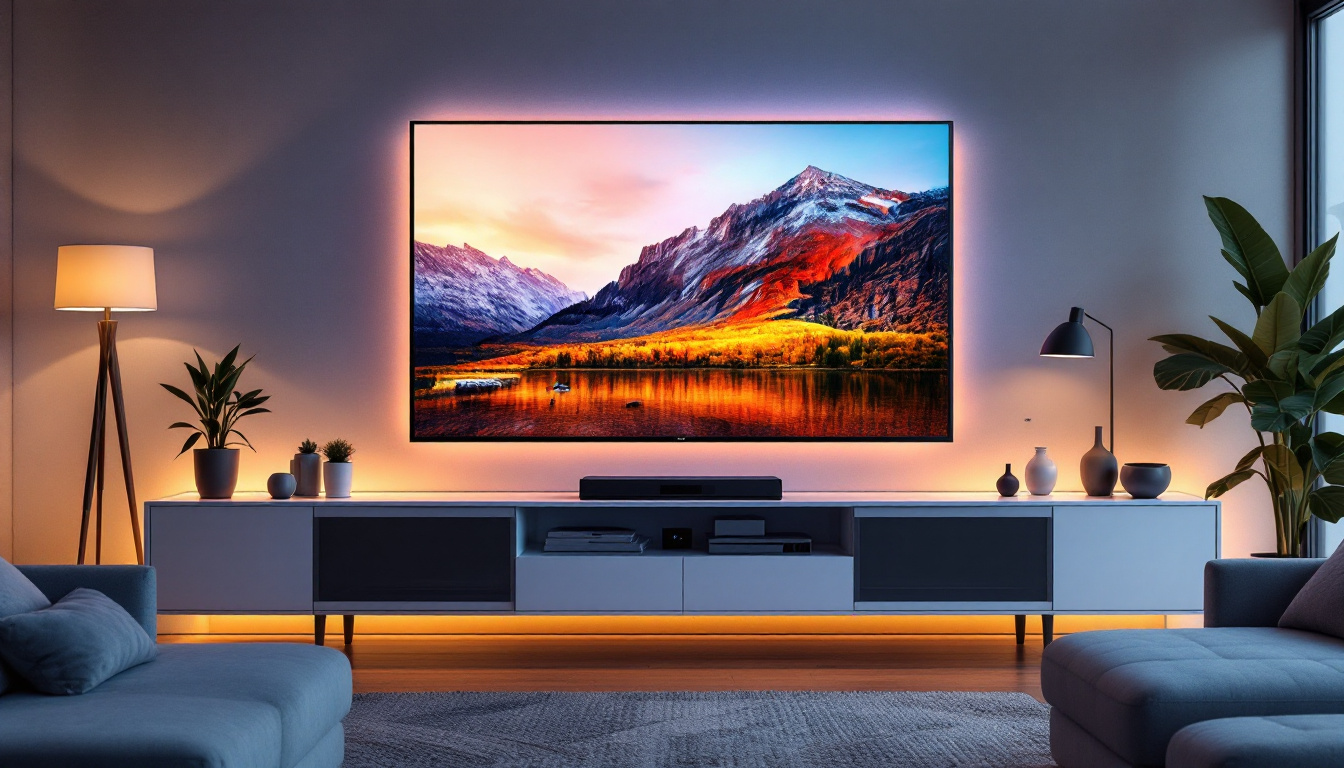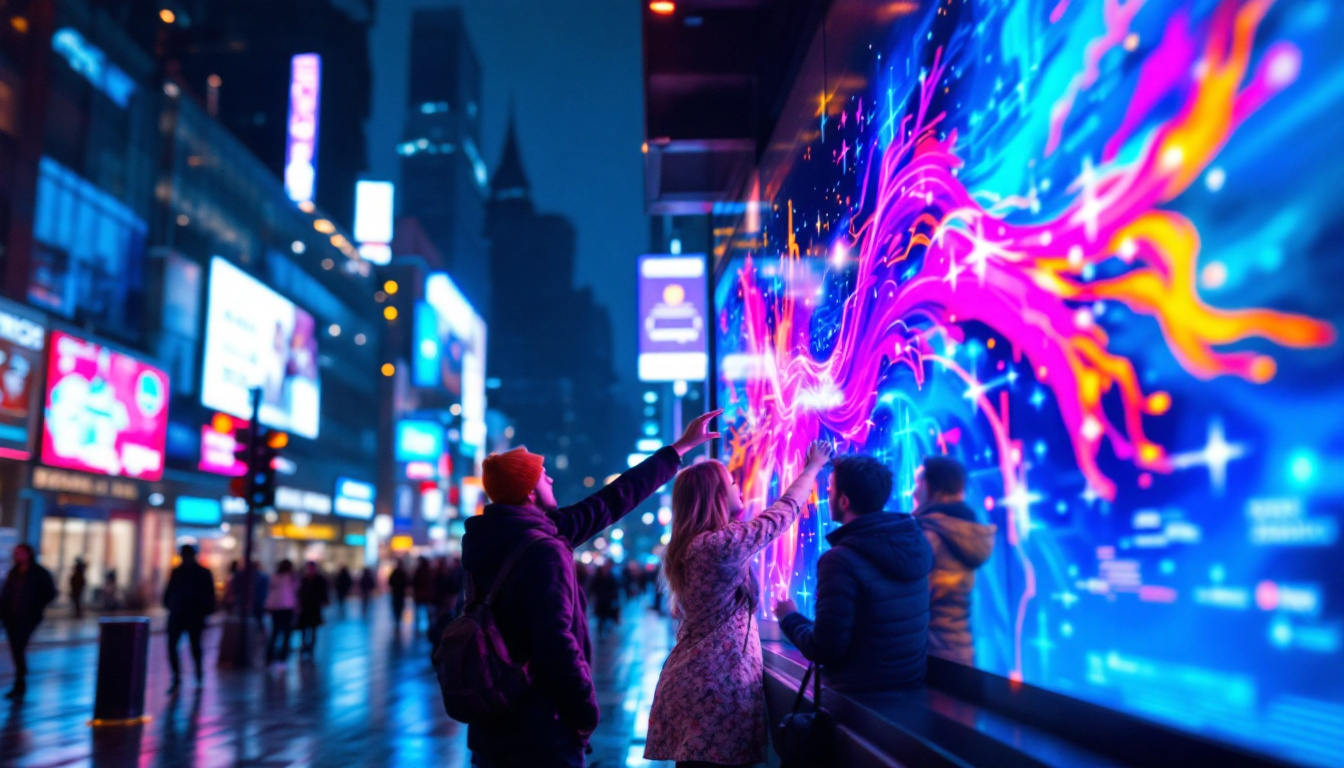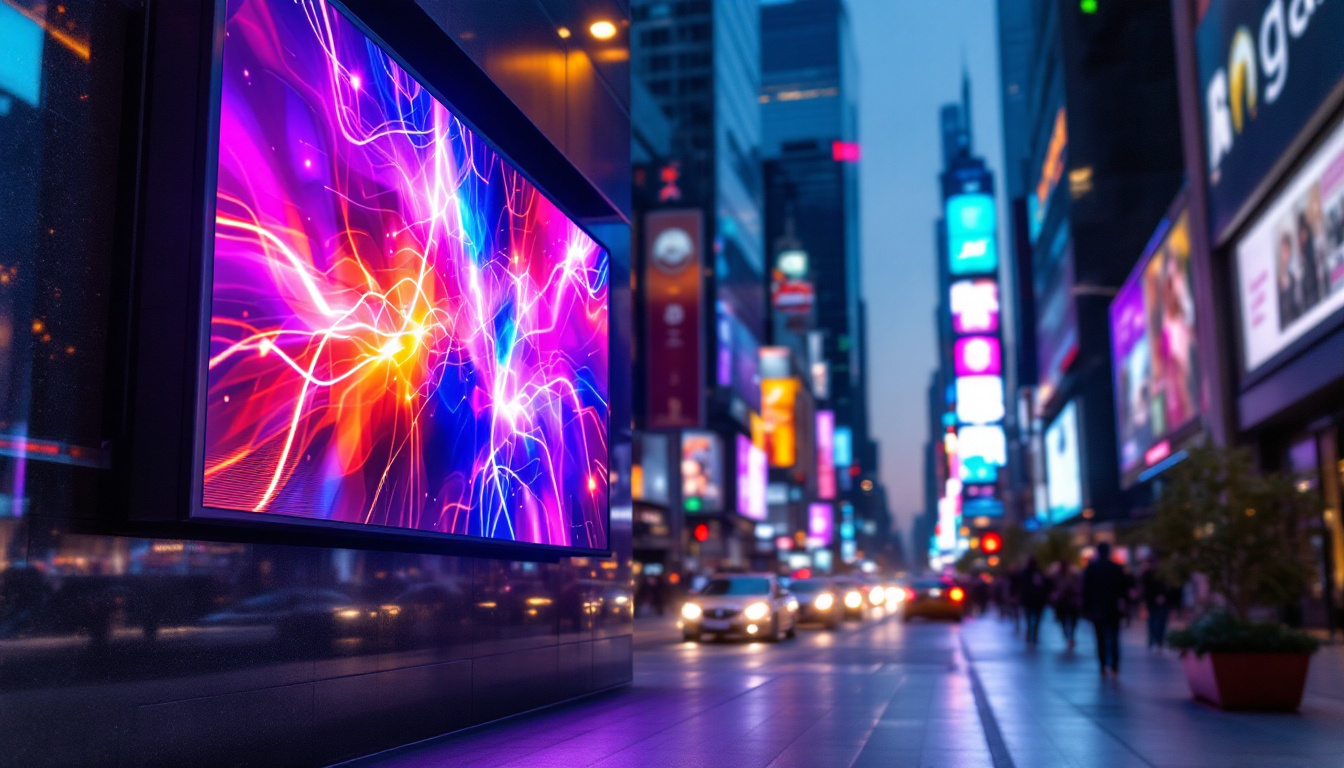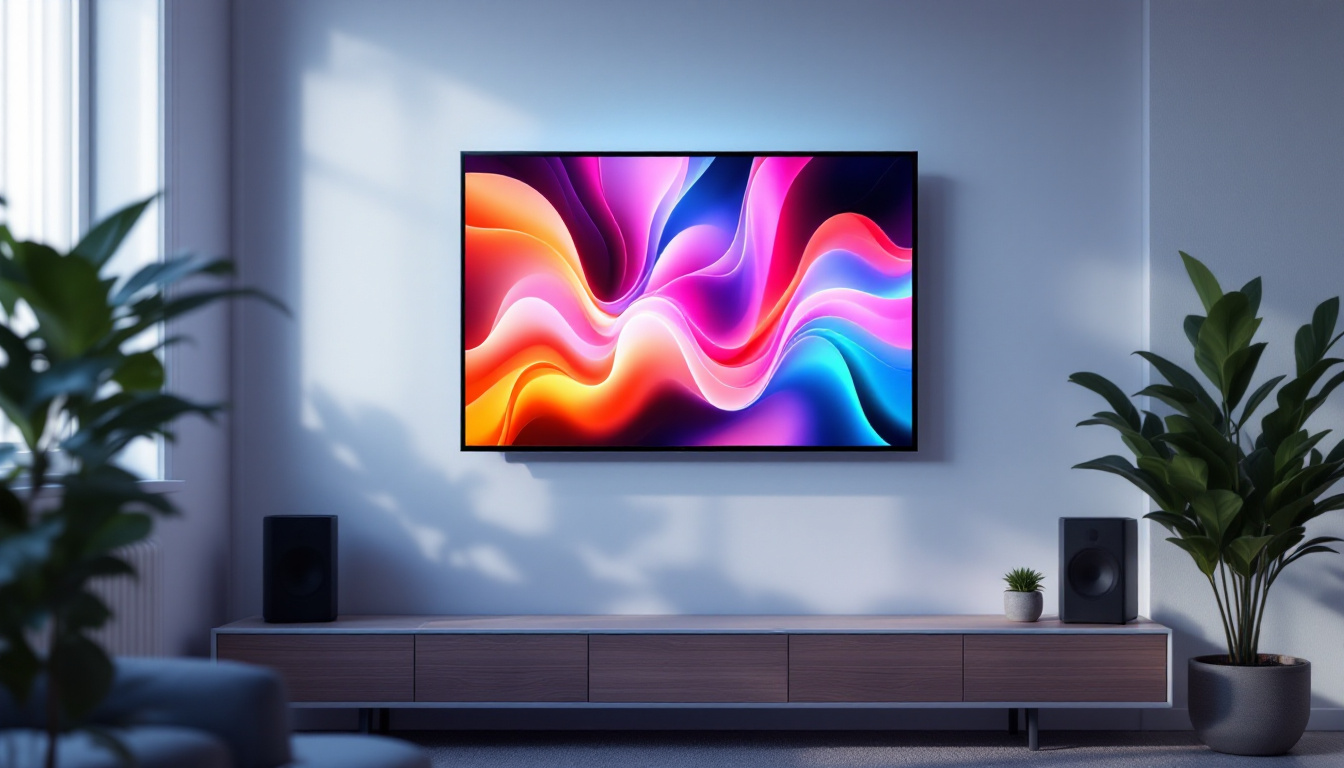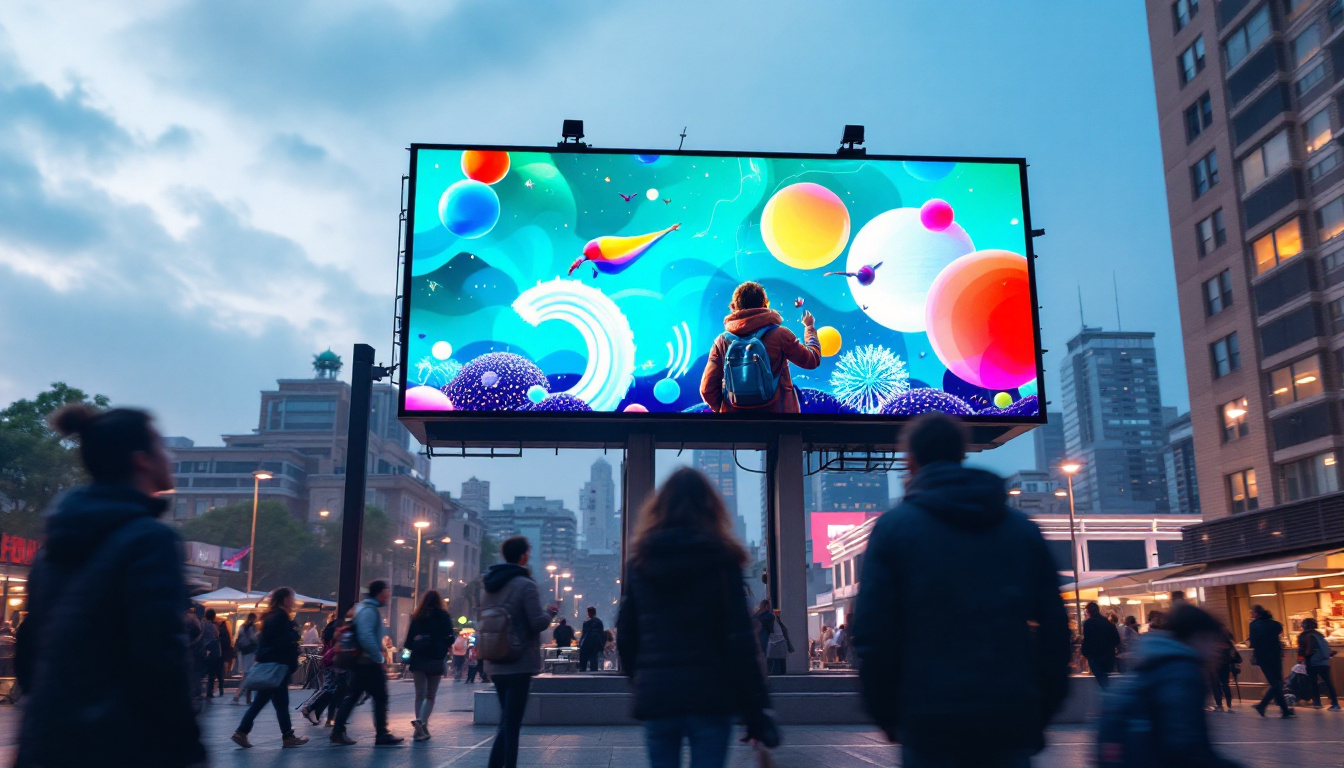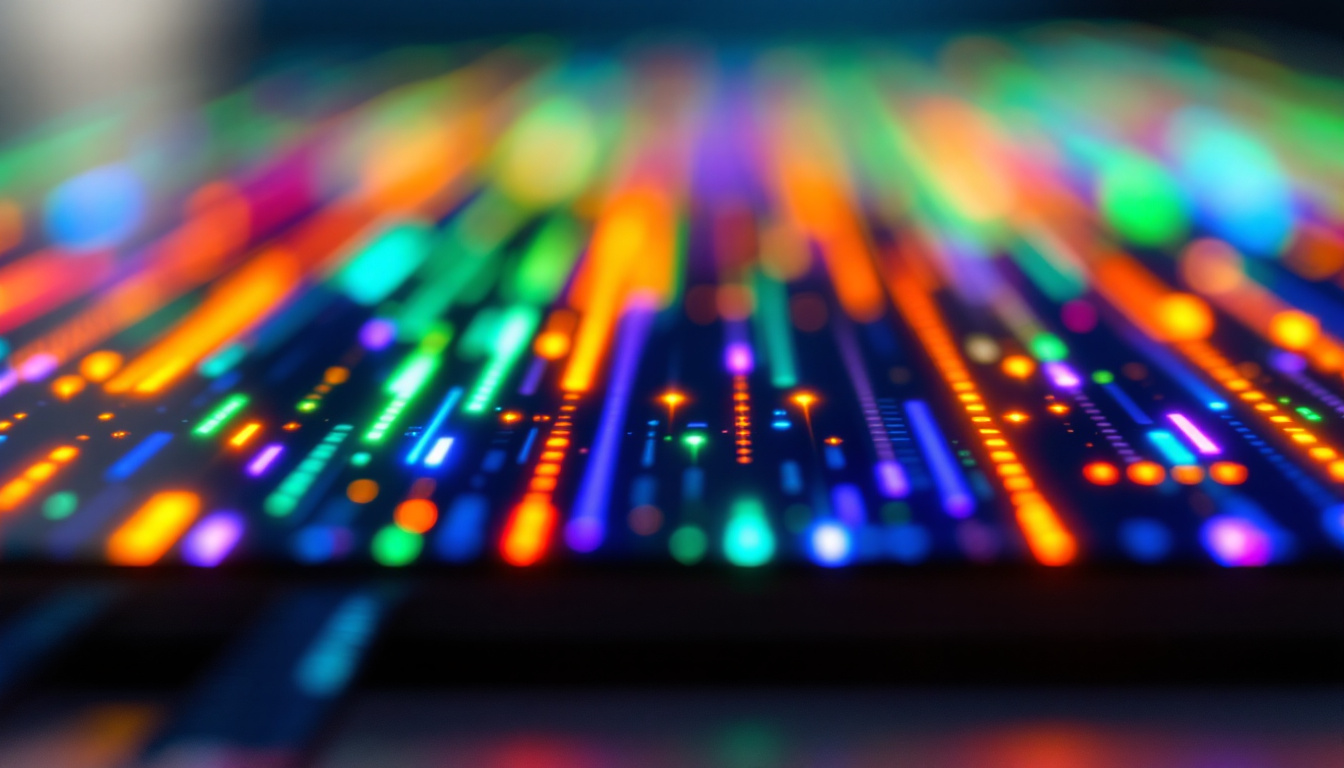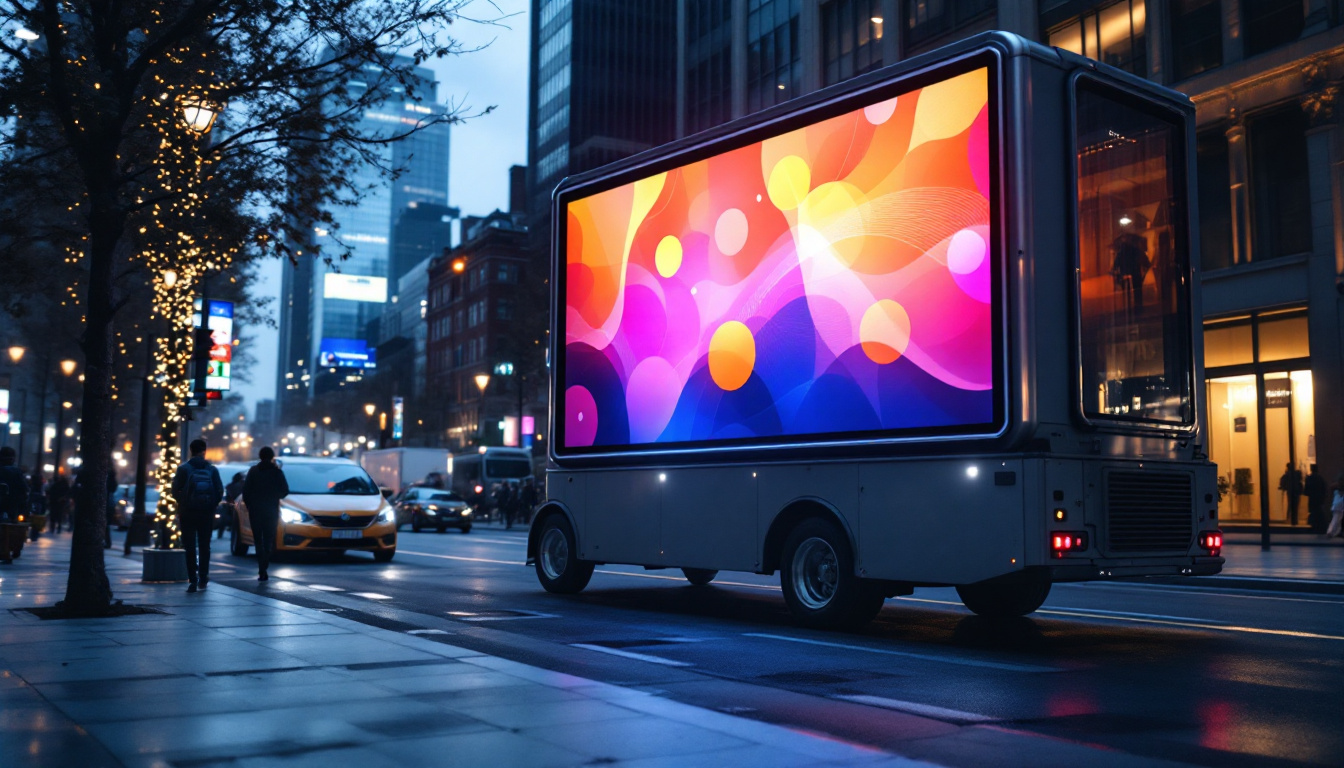In the realm of modern cabinetry, the integration of technology has transformed traditional designs into sophisticated, multifunctional spaces. Among the innovations leading this change are LED displays, which have become increasingly popular in fine line cabinets. This article delves into the specifics of LED displays in cabinetry, exploring their benefits, applications, and the future of this technology in home design.
Understanding LED Displays in Fine Line Cabinets
LED displays in fine line cabinets serve as a functional and aesthetic enhancement. These displays can be integrated into various cabinet styles, providing not only illumination but also interactive features that cater to contemporary living. Understanding the mechanics and benefits of LED technology is essential for homeowners and designers alike.
What is an LED Display?
Light Emitting Diodes (LEDs) are semiconductor devices that emit light when an electric current passes through them. Unlike traditional incandescent bulbs, LEDs are energy-efficient and have a longer lifespan. This technology has found its way into cabinetry, where it can serve multiple purposes, from ambient lighting to information displays. The compact size of LEDs allows for creative placement within cabinets, ensuring that every corner can be effectively lit without taking up valuable space.
Benefits of Integrating LED Displays
The integration of LED displays into fine line cabinets offers several advantages. Firstly, they provide enhanced visibility, making it easier to locate items within the cabinet. Secondly, LED displays can be programmed to change colors or brightness, allowing for customization according to the mood or occasion. Additionally, they can serve as a focal point in kitchen or living room designs, adding a modern touch that appeals to contemporary aesthetics. Beyond mere functionality, these displays can also contribute to energy savings, as they consume significantly less power than traditional lighting options, making them an eco-friendly choice for the environmentally conscious homeowner.
Applications in Home Design
LED displays can be used in various applications within fine line cabinets. For instance, in kitchens, they can illuminate countertops or highlight glassware in display cabinets. In living rooms, LED displays can enhance entertainment centers, providing information about media being played or even displaying artwork. The versatility of LED technology allows it to adapt to various design needs, making it a valuable addition to any home. Furthermore, in bedrooms, LED displays can be integrated into wardrobes to provide soft lighting for clothing selection, while also serving as a night light. This multifunctionality not only enhances the usability of spaces but also contributes to a cohesive design theme throughout the home, seamlessly blending technology with style.
Design Considerations for LED Displays
When incorporating LED displays into fine line cabinets, several design considerations must be taken into account. These factors can significantly impact the overall effectiveness and aesthetic appeal of the installation.
Placement and Configuration
The placement of LED displays is crucial for maximizing their functionality. Strategically positioning LEDs can enhance visibility and create an inviting atmosphere. For example, under-cabinet lighting can illuminate workspaces, while backlit shelves can create a dramatic effect. Configuration options, such as dimming capabilities or color-changing features, allow for further customization based on user preferences. Moreover, considering the height and angle of the displays can optimize light distribution, ensuring that every corner of the space is adequately lit. This attention to detail not only improves usability but also elevates the overall design aesthetic, making the environment more engaging and visually appealing.
Power Supply and Connectivity
Integrating LED displays requires careful consideration of power supply and connectivity. Most LED systems operate on low voltage, necessitating the installation of transformers or drivers. Additionally, if the display is connected to smart home systems, ensuring seamless connectivity is essential. This may involve Wi-Fi or Bluetooth integration, allowing for remote control and automation. Furthermore, planning for adequate power management is vital to prevent overloads and ensure longevity of the LED components. Utilizing energy-efficient power supplies can also contribute to sustainability efforts, reducing the overall energy consumption of the installation while maintaining optimal performance.
Material Compatibility
Not all cabinet materials are suitable for LED integration. It is vital to choose materials that can withstand heat generated by LED displays and are compatible with the installation process. For instance, wood, metal, and certain plastics can effectively house LED technology without compromising the integrity of the cabinet. Additionally, the finish of the materials should be considered, as reflective surfaces can enhance light diffusion, while matte finishes may absorb light and reduce brightness. Selecting the right combination of materials not only ensures functionality but also contributes to the visual harmony of the space, allowing the LED displays to shine without overwhelming the overall design.
Maintenance and Durability
Another critical aspect to consider is the maintenance and durability of the LED displays. Regular upkeep is essential to ensure that the lights operate at peak performance and maintain their aesthetic appeal over time. This includes cleaning the fixtures to prevent dust accumulation and checking connections to avoid any disruptions in functionality. Additionally, selecting high-quality LED products that are resistant to wear and tear can significantly extend their lifespan. Investing in durable components may also reduce long-term costs associated with replacements and repairs, making it a wise choice for both residential and commercial applications.
Environmental Impact
Lastly, the environmental impact of LED displays should not be overlooked. LEDs are known for their energy efficiency, but the materials used in their construction and the disposal methods at the end of their lifecycle are equally important. Opting for eco-friendly materials and ensuring proper recycling of LED components can minimize the ecological footprint of the installation. Furthermore, educating users on the benefits of energy-efficient lighting can promote sustainable practices within the home or business, fostering a culture of environmental responsibility while enjoying the benefits of modern lighting technology.
Installation Process for LED Displays
The installation of LED displays in fine line cabinets can be a complex process, requiring careful planning and execution. Understanding the steps involved can help ensure a successful integration.
Preparation and Planning
Before installation, it is essential to plan the layout of the LED displays. This involves measuring the cabinet space, determining the number of displays needed, and selecting the appropriate LED types. Planning also includes deciding on the power supply and ensuring that all necessary tools and materials are on hand.
Installation Steps
The installation process typically begins with securing the power supply and wiring. Once the electrical components are in place, the LED strips or panels can be mounted within the cabinet. It is crucial to follow manufacturer guidelines to ensure proper installation and avoid damage to the cabinetry. After installation, testing the displays for functionality and making any necessary adjustments is the final step.
Safety Considerations
Safety is paramount when installing LED displays. Ensuring that all electrical connections are secure and that the installation complies with local building codes is essential. Additionally, using LED products that are rated for the intended application can prevent overheating and potential hazards.
Maintenance and Troubleshooting
Once LED displays are installed, regular maintenance is necessary to ensure their longevity and performance. Understanding common issues and their solutions can help homeowners maintain their cabinetry effectively.
Routine Maintenance
Routine maintenance involves cleaning the LED displays and checking for any signs of wear or damage. Dust and grime can accumulate on surfaces, diminishing the brightness and clarity of the displays. Using a soft, dry cloth to clean the surfaces without damaging the components is recommended. Additionally, checking connections and power supplies periodically can help prevent issues before they arise.
Common Issues and Solutions
Despite their durability, LED displays may encounter issues over time. Common problems include flickering lights, dimming, or complete failure. Flickering can often be resolved by checking the connections or replacing faulty components. If the display is dimming, it may be due to a power supply issue or the need for a replacement. In cases of complete failure, troubleshooting the wiring and ensuring the power supply is functioning correctly is essential.
When to Seek Professional Help
While many maintenance tasks can be performed by homeowners, certain situations may require professional assistance. If there are persistent issues that cannot be resolved through basic troubleshooting, or if there is a need for extensive repairs or replacements, consulting a qualified electrician or cabinetry professional is advisable. Their expertise can ensure that the LED displays are functioning optimally and safely.
The Future of LED Displays in Cabinetry
The future of LED displays in fine line cabinets looks promising, with advancements in technology continually enhancing their capabilities. As smart home technology evolves, the integration of LED displays is expected to become even more sophisticated.
Smart Home Integration
As smart home systems become increasingly prevalent, the integration of LED displays within these systems will allow for greater control and customization. Homeowners will be able to adjust lighting settings, colors, and even display information remotely through smartphone applications. This level of control will enhance the user experience and provide greater convenience in daily life.
Innovative Designs and Features
Future innovations in LED technology may lead to even more creative applications in cabinetry. For example, displays could incorporate touch-sensitive controls, allowing users to interact directly with the cabinet surfaces. Additionally, advancements in energy efficiency and sustainability may lead to the development of eco-friendly LED options that reduce environmental impact.
Customization and Personalization
As consumer preferences shift towards personalization, the demand for customizable LED displays will likely increase. Homeowners may seek unique lighting solutions that reflect their individual styles and preferences. This trend could lead to a wider variety of LED options, including customizable colors, patterns, and even dynamic displays that change based on user behavior or time of day.
Conclusion
Fine line cabinets with integrated LED displays represent a significant advancement in home design, merging functionality with aesthetic appeal. Understanding the mechanics, benefits, and installation processes of LED displays is essential for homeowners looking to enhance their living spaces. As technology continues to evolve, the possibilities for LED displays in cabinetry are limitless, paving the way for innovative designs and improved user experiences.
Incorporating LED displays into fine line cabinets not only elevates the visual appeal of a home but also enhances its functionality. As this technology becomes more accessible and customizable, it is poised to play a crucial role in the future of interior design.
Explore the Future of Cabinetry with LumenMatrix
Ready to bring the cutting-edge sophistication of LED display technology into your home? LumenMatrix is at the forefront of this innovation, offering a wide array of LED display solutions that can transform your fine line cabinets into dynamic, interactive pieces of art. From Indoor LED Wall Displays to Custom LED Displays and beyond, our products are designed to integrate seamlessly into your living spaces, enhancing both functionality and visual appeal. Check out LumenMatrix LED Display Solutions today and take the first step towards revolutionizing your home’s design.

